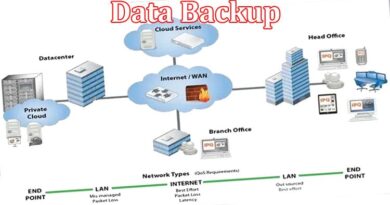Demystifying Microservices Architecture: A Beginner’s Guide
You’ve probably heard of the term “microservices”, but what exactly does it mean? In simple terms, microservices are component-based independent services that form the building blocks of larger software. These smaller services communicate over APIs, with each service maintained by independent teams.
With this revolutionary approach to building software and applications, development teams can scale faster and accelerate the time-to-market for new products and features. If you are interested in component-based software architecture, this article is right up your alley. Let’s begin;
Understanding Microservices
Microservices architecture is a method of developing software applications as a collection of small, independent services, hence its component-based nature. These “micro” services work together to create a larger, more complex application that is easily scalable and more seamless to develop. These smaller services communicate with each other through APIs.
In contrast, monolithic architecture packs everything into one service, or rather, the entire application is coupled. This presents such challenges as:
- Risk of failure across the entire application escalated.
- Added complexity when it comes to implementation, adding features, or fixing bugs.
- Makes innovation difficult due to tightly coupled processes.
With microservices, each component can be developed, tested, deployed, fixed, and scaled without affecting the functionality of the other services. Each microservice is also specialized for a particular application, making this approach suitable for developer teams working on large applications.
How Companies Use Microservices
From this background, we can picture how companies employ microservices. Just remember, when you pay for essay on this topic, you should be able to get all that information wrapped up in one nice piece, like this:
Scalability: Companies use microservices to scale their applications efficiently. When a particular service within the application needs to handle a heavier load, it can simply be scaled without affecting the rest of the application.
Error Isolation: Microservices architecture helps in isolating errors. If one service encounters an issue, it doesn’t necessarily disrupt the entire application. Troubleshooting and fixing are therefore made easier.
Faster Development: Different teams can work on different microservices independently, reaping the full benefits of agile. Development is sped up and each team can focus on a single thing.
Flexibility: Microservices provide flexibility to developers. Each service can be developed using the most suitable technology stack for its specific purpose. This means you can have services written in different programming languages working seamlessly together.
Efficient Resource Usage: Companies can allocate resources more efficiently. If one service requires more computing power or memory, it can be provisioned without affecting other services.
Microservices in Action
Let’s illustrate how microservices work in practice with a simple example.
Consider an e-commerce application where individual functions such as order processing, inventory management, user authentication, and product catalog are developed as microservices.
Here’s a basic overview of how they interact:
User Authentication Service: This microservice handles user registration and login. It communicates with the front-end application and returns authentication tokens.
Product Catalog Service: It manages the product catalog, providing information on available products. This service communicates with the front-end application and also with the order-processing service.
Order Processing Service: This microservice takes care of order placement, payment processing, and order fulfillment. It communicates with the product catalog and the user authentication service.
Inventory Management Service: It tracks the availability of products in the inventory and communicates with the order processing service.
Here’s a simple network diagram of how these microservices interact:
Table 1: Microservices in an e-commerce service
In this scenario, each microservice operates independently, communicating within the block via well-defined APIs. When a user logs in and places an order, the order processing service communicates with the product catalog and inventory management service to ensure the product is available. The order is then processed.
So, Have You Interacted with Microservices Before?
Before we wrap up, let’s consider instances where you might have encountered microservices without even realizing it.
Online Shopping
Ever wondered how an e-commerce giant like Amazon manages to deliver products to your doorstep in record time? Microservices are at the heart of the company’s operations. Independent microservices are deployed for order processing, inventory management, user authentication, and more. Each of these services collaborates seamlessly to provide you with a smooth shopping experience.
Data-Heavy Web Services
Imagine you click on a link like payforessay.net review and find a great website where you can order a professional paper. The website might be hosting a few microservices if well-developed, for example, one to handle authentication, another to handle data encryption, and another to run an AI matching writers with customers.
Social Media Platforms
Social media platforms like Facebook, Twitter, and Instagram rely on microservices to deliver real-time updates, manage user profiles, and handle multimedia content. There are other microservices working behind the scenes to deliver the user a seamless social experience.
Streaming Services
When you binge-watch your favorite shows on Netflix or stream music on Spotify, you’re interacting with microservices. Microservices handle user authentication, content recommendation, payment processing, and content delivery, ensuring you have uninterrupted entertainment.
Ride-Sharing Apps
Services like Uber and Lyft heavily depend on microservices for matching riders with drivers, tracking rides in real time, and handling payments securely. These microservices work together to make ride-sharing services efficient and reliable.
Why Learning About Microservices Matters for You
Understanding microservices is not just about theoretical knowledge; it’s a practical skill that has widespread industry use. Companies are actively seeking individuals who can design, build, and maintain microservices-based applications. Whether you’re a Java enthusiast, an HTML pro, or skilled in other programming languages, this knowledge is your bridge to creating scalable, resilient, and efficient software.
As you progress in your professional journey, roles like software engineer, DevOps engineer, cloud architect, or even full-stack developer will likely come calling. These roles demand a deep understanding of microservices, as they are instrumental in developing modern, high-performance applications. Learn more about microservices to be fully prepared to tackle the complex challenges in large-scale tech today.




